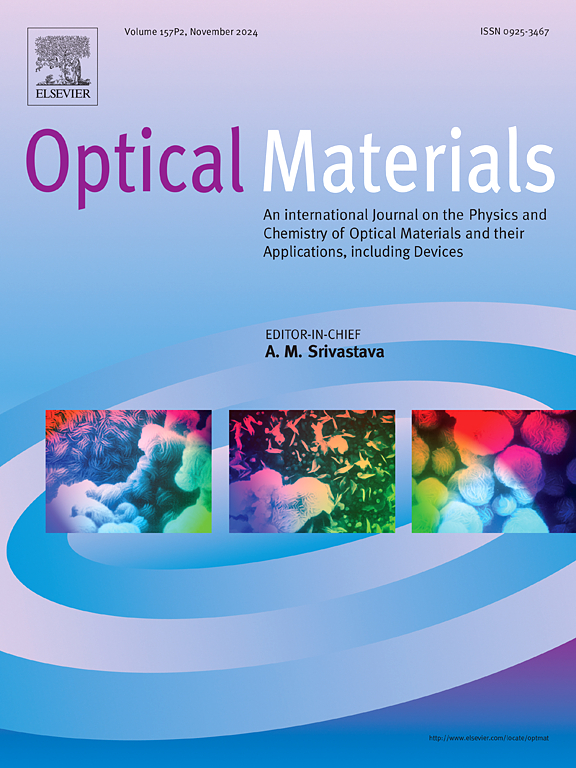Optical and microstructural studies of femtosecond laser treated amorphous germanium thin coatings
IF 3.8
3区 材料科学
Q2 MATERIALS SCIENCE, MULTIDISCIPLINARY
引用次数: 0
Abstract
The study of the relaxation mechanism of amorphous germanium after femtosecond laser irradiation is presented in this work. In particular, a thin germanium coating was deposited onto a glass substrate through the electron beam vacuum coating method. The substrate was kept at room temperature during the coating process, which resulted in a deposited layer characterized by an amorphous microstructure, as observed from the X-ray diffraction. The germanium layer was then irradiated with a femtosecond laser at 1030 nm wavelength, while varying the net fluence from 15 J cm−2 to 90 J cm−2. Moreover, an extended two temperature model was used to extract the electronic and lattice temperature of the laser heated germanium coating, showing a 32 % contribution from heating due to the thermal accumulation effect. The microstructural and morphological studies of the irradiated samples were carried out using θ-2θ X-ray diffraction and high-resolution scanning electron microscopy. From the X-ray diffraction results, it was observed that at higher laser fluence there is an emergence of crystallinity on the germanium layer, with no evidence of oxidation. On the surface, the morphology was observed to evolve to granular sphere, attributed to melting of the material. Finally, an increase in absorbance with laser fluence was observed and the optical band gap of the coating was calculated.
飞秒激光处理非晶锗薄膜的光学和微观结构研究
本研究介绍了飞秒激光辐照后非晶锗的弛豫机制。其中,通过电子束真空镀膜法在玻璃基底上沉积了一层薄薄的锗涂层。在镀膜过程中,基片保持在室温下,根据 X 射线衍射的观察结果,沉积层的微观结构为非晶态。然后用波长为 1030 nm 的飞秒激光照射锗层,同时改变 15 J cm-2 至 90 J cm-2 的净通量。此外,还使用扩展的双温模型来提取激光加热锗涂层的电子温度和晶格温度,结果显示热累积效应导致的加热占 32%。利用 θ-2θ X 射线衍射和高分辨率扫描电子显微镜对辐照样品进行了微观结构和形态研究。从 X 射线衍射结果可以看出,在较高的激光能量下,锗层出现结晶,没有氧化迹象。在表面,观察到的形态演变为颗粒状球体,这归因于材料的熔化。最后,观察到吸光度随激光能量的增加而增加,并计算出涂层的光带隙。
本文章由计算机程序翻译,如有差异,请以英文原文为准。
求助全文
约1分钟内获得全文
求助全文
来源期刊

Optical Materials
工程技术-材料科学:综合
CiteScore
6.60
自引率
12.80%
发文量
1265
审稿时长
38 days
期刊介绍:
Optical Materials has an open access mirror journal Optical Materials: X, sharing the same aims and scope, editorial team, submission system and rigorous peer review.
The purpose of Optical Materials is to provide a means of communication and technology transfer between researchers who are interested in materials for potential device applications. The journal publishes original papers and review articles on the design, synthesis, characterisation and applications of optical materials.
OPTICAL MATERIALS focuses on:
• Optical Properties of Material Systems;
• The Materials Aspects of Optical Phenomena;
• The Materials Aspects of Devices and Applications.
Authors can submit separate research elements describing their data to Data in Brief and methods to Methods X.
 求助内容:
求助内容: 应助结果提醒方式:
应助结果提醒方式:


